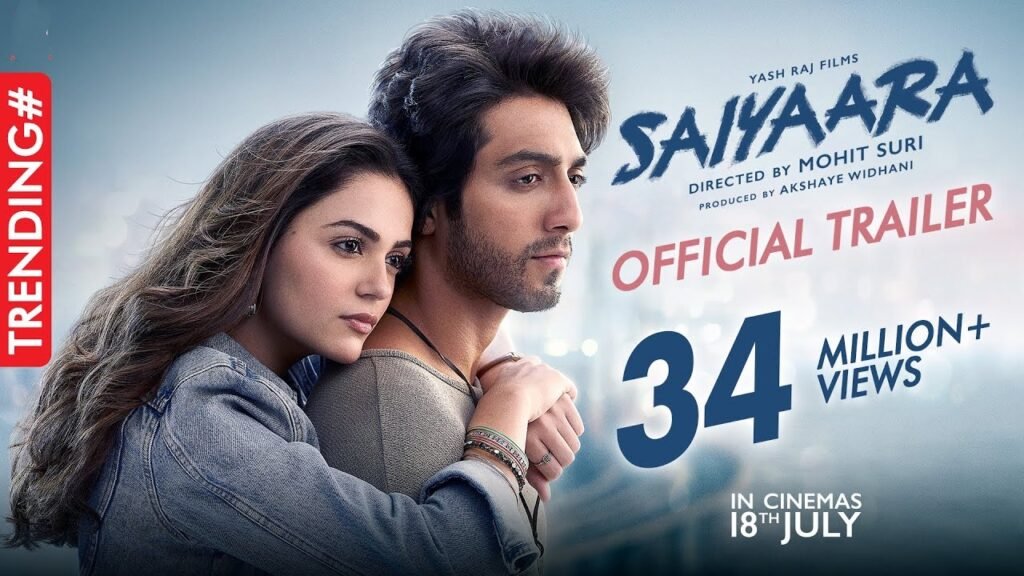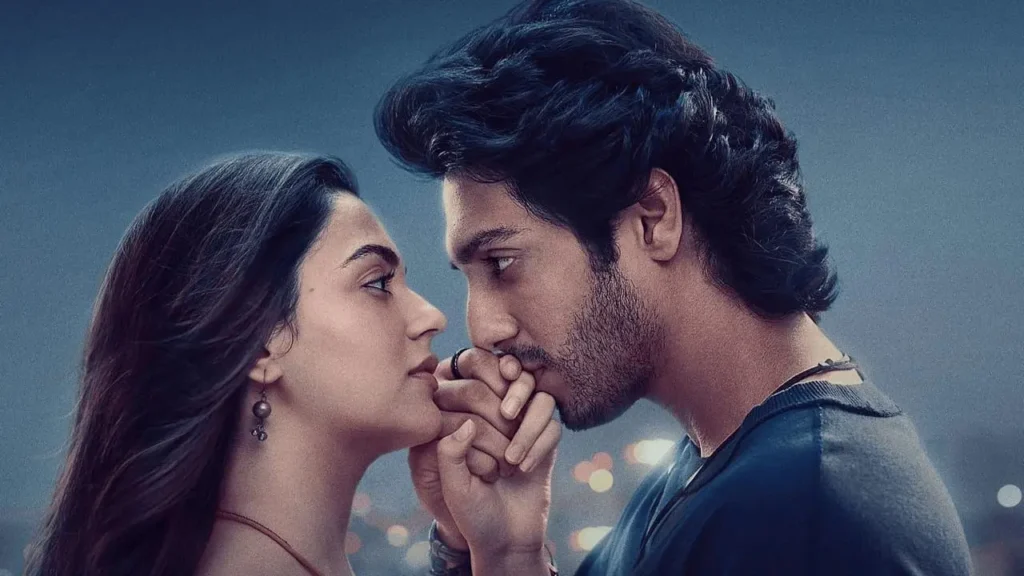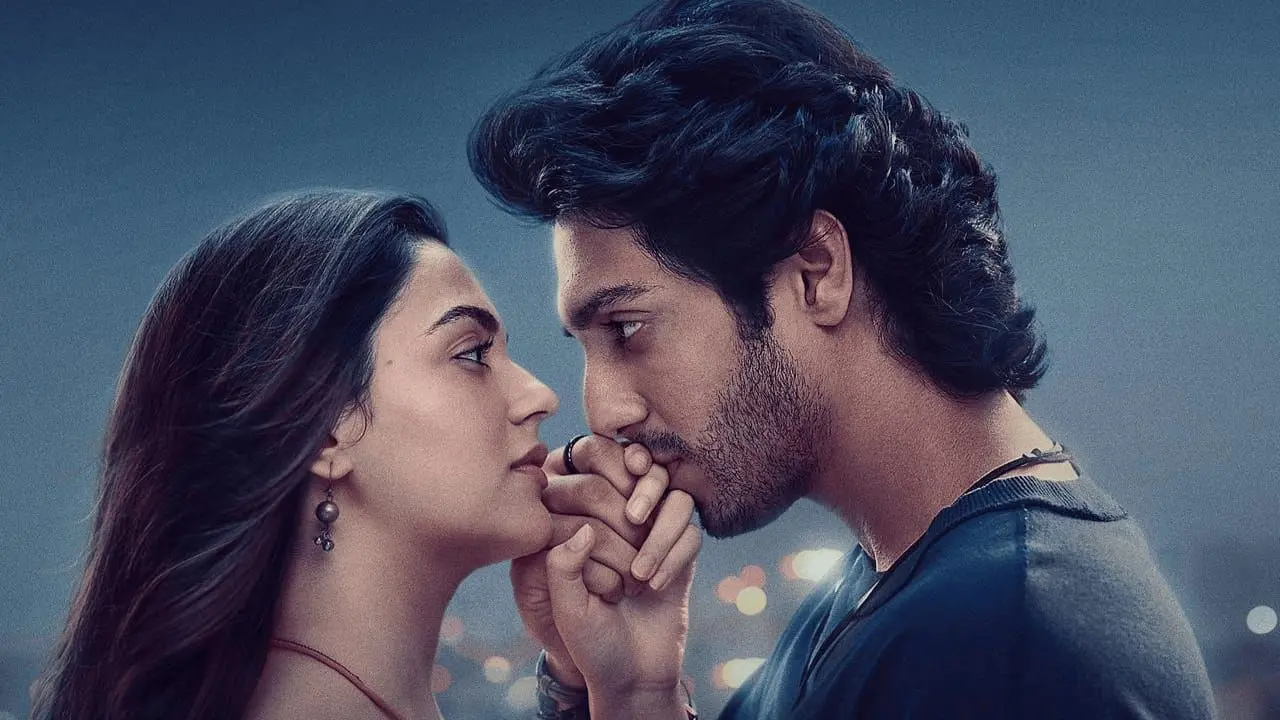Saiyaara Hidden Story Analysis: Untold Themes, Symbolism

🎬 The Concept Behind Saiyaara: What Was the Director Trying to Say?
Every film begins as a feeling. Saiyaara doesn’t just narrate a story—it expresses an inner world. A space filled with love, memory, and invisible scars. Unlike typical romances, this movie leans into emotional abstraction rather than linear storytelling.
At its core, Saiyaara is about separation and belonging. The characters are drawn together by fate, only to be tested by destiny. But this film isn’t merely about a relationship. It’s about what remains when a relationship fades—memories, mistakes, longing, and lessons.
The director, in crafting this universe, seems to be deeply inspired by themes of cosmic loneliness. The title “Saiyaara” itself means traveler or wanderer, often associated with stars and the sky. This subtly suggests that love here is not rooted on Earth—it’s floating, searching, evolving. You’re not watching a couple’s journey; you’re watching a soul’s journey through emotional space.
A unique thing / Saiyaara hidden story analysis
about this movie is the slow-burning narrative pace. This is intentional. The director chooses moments of silence, gazes, and pauses to let the story breathe. Instead of loud declarations of love, we hear unspoken pain through visuals and minimalistic dialogue.
Another artistic decision is the use of memory over chronology. We don’t always see events in the order they happened, but rather, as they are remembered. This adds emotional layers because human memory isn’t factual—it’s felt. This technique blurs the line between truth and perception, enhancing the poetic atmosphere of the movie.
The film also critiques modern relationships—instant gratification, emotional escapism, digital disconnects—and shows how people often leave, not because of hate, but because they fear the weight of staying.
So, what is the director trying to say? Possibly this:
Love is not about holding on. It’s about the freedom to let someone go—and still love them in their absence. It’s about growing through grief, not just surviving it.
🧠 Saiyaara Hidden Story Analysis: Dual Narratives and Symbolism
Underneath Saiyaara’s emotional plot lies a dual-layered narrative. One that we see—and one that we feel.
The surface story might seem simple: lovers meet, get separated, and reflect on what they had. But beneath that, the movie explores existential loneliness, generational trauma, and even cosmic philosophy. These themes are wrapped in rich metaphors—visuals, settings, and symbols that convey more than words ever could.
For example, the recurring image of open skies isn’t just aesthetic. It symbolizes both hope and emptiness. When the sky is clear, we feel the freedom of possibility. But it also represents the vast, infinite gap between people—physically or emotionally.
Another powerful symbol / Saiyaara hidden story analysis
is the mirror. Throughout the film, characters are often shown looking at their reflections—alone, broken, or confused. These moments aren’t about vanity. They’re about identity. What do we see in ourselves when love fades? Do we recognize who we’ve become?
There’s also a recurring theme of duality:
- Day and night
- Love and fear
- Truth and memory
- Staying and leaving
These contrasts appear not just in dialogue, but also through costume changes, lighting shifts, and sound design. One half of the movie is drenched in warm, nostalgic tones. The other is cold, modern, and detached. This reflects the emotional transformation of the characters.
In fact, some fans believe the movie has a non-linear metaphysical layer—where the characters aren’t just people, but symbolic entities:
- One representing desire,
- One representing loss,
- One representing hope.
The film’s final act, particularly, blurs the line between dream and reality. Did the reunion really happen? Or was it an emotional closure in the character’s mind? The ambiguity is the point. The film isn’t about what’s real—it’s about what feels real to someone heartbroken.
Interestingly, even the side characters serve symbolic roles. A child may represent innocence lost. A stranger on the bus could symbolize a fleeting chance at redemption. Every element feels placed with poetic intent.
So, while most viewers may walk away with a single love story in mind, those who look closer will find a multi-dimensional emotional labyrinth. One that reflects the ache of being human—and the beauty of never giving up on love, no matter how far it drifts.
🎭 Character Mirrors: Who Represents What in Saiyaara?
Every character in Saiyaara is more than a role—they are reflections of emotional states. Rather than functioning just as part of a linear plot, each figure seems carefully constructed to symbolize ideas and conflicts that exist within the mind and heart of the protagonist.
Let’s begin with the central character, who doesn’t simply act as a lover—but as a seeker. Their journey isn’t outward; it’s inward. Every decision made is less about narrative progression and more about emotional excavation. The protagonist appears to reflect a sense of inner conflict between holding on and letting go. Whether they are chasing someone, avoiding confrontation, or revisiting memories, these actions mirror a deep, psychological tug-of-war.
Now consider the love interest. This person can be seen as an emotional anchor—and yet, paradoxically, also a storm. They represent both stability and unpredictability. Their sudden exits and quiet re-entries into the protagonist’s life hint at the uncontrollable nature of emotions—especially love. Sometimes you want to stay, but you’re pulled away by personal demons or silent traumas.
Even more fascinating / Saiyaara hidden story analysis
is the idea that this love interest may not be a “real” person at all. Some viewers speculate that they could symbolize the protagonist’s idealized version of love—something they’ve imagined, desired, and shaped in their head, but never fully known.
Other supporting characters play abstract roles:
- A friend who provides comic relief may symbolize the distractions we cling to when things get emotionally intense.
- A parental figure, often shown briefly but with impact, can reflect generational expectations, emotional suppression, or the cycle of emotional inheritance.
- A stranger, met during travel or in an emotionally vulnerable moment, might be a stand-in for fate or divine intervention.
Interestingly, no one in this movie is entirely “good” or “bad.” Instead, they’re morally blurred, emotionally vulnerable, and very human. This makes them compelling to watch because they act unpredictably—just like we do in real life.
The most unique artistic decision? The lack of a traditional antagonist. There’s no villain. Instead, the real enemy is often time, silence, ego, or unspoken regret. The absence of a face to blame makes the movie more introspective. It forces the audience to confront their own emotional blockages.
So, when you watch Saiyaara again, don’t just ask what a character did. Ask what they represent. You’ll find that every moment is loaded with layers—some comforting, some heartbreaking, but all painfully honest.
🎶 When Music Speaks Louder Than Dialogues: Saiyaara’s Sonic Soul
In Saiyaara, music is not a backdrop—it’s the emotional bloodstream of the film. Each note, each silence, and each lyrical passage has been carefully woven to echo what words alone could never convey.
The soundtrack plays a pivotal role in timing the emotion. You’ll notice that the music swells just after key moments—not during. This delay allows the audience to feel first, and then reflect. It’s a technique often seen in European arthouse films, and here, it gives the narrative a haunting rhythm.
or crowd-pleasing dance tracks. Instead, the movie relies on soulful melodies, slow acoustics, and lyric-heavy compositions. The instrumentation is minimalistic—often just a piano, soft strings, or a single voice. This allows the emotions to remain raw, without distraction.
The placement of songs is also very deliberate:
- A song of longing plays after separation, capturing the silence between two people better than any phone call ever could.
- A song of hope appears not during success, but during failure—when characters are most vulnerable.
- A refrain comes back in multiple scenes, slightly altered in tone or tempo, to show the emotional evolution of a memory.
There are no “item songs”/ Saiyaara hidden story analysis
And then there are moments of musical silence—which are just as powerful. In one intense scene, everything goes mute. No dialogue, no background score. Just ambient sound: wind, footsteps, heartbeats. That silence screams louder than violins ever could. It’s as if the film trusts you to feel everything without being told how.
The lyrics themselves deserve a literary breakdown. Most of the verses are written in poetic Hindi, often blending metaphors of space, dreams, and shadows. These aren’t just song lyrics—they are emotional diaries, wrapped in melody. They don’t tell you what happened—they make you relive it.
Interestingly, each song feels like it’s being sung from the future—like someone looking back, long after the moment has passed. This retroactive storytelling through music builds nostalgia in real time. You’re mourning what’s gone before it even fully leaves the screen.
The genius lies in how the background score complements the silence. When characters avoid saying something important, a soft note hums in the background—as if the movie itself wants to cry in their place.
In Saiyaara, music does not ask for attention. It earns it. And the result? A cinematic experience where your ears and heart beat together—without needing permission from your brain.
🧵 Dialogues as Layers: Hidden Meanings and Subtext
In Saiyaara, the dialogues don’t just serve to move the plot—they function like poetry laced with emotional landmines. What’s spoken is only half the story. The real weight lies in the subtext—what’s left unsaid, what’s hinted at, and what echoes after the words are gone.
Many of the film’s most powerful lines are deceptively simple:
- “Tum theek ho na?” sounds like a generic check-in. But when said after silence and pain, it becomes a cry for reconnection.
- “Main wapas aaya hoon”—a return isn’t always physical. This line often implies an emotional return, a soul trying to find its home again.
The dialogues work on three levels:
- Literal meaning (what’s actually said)
- Emotional context (what’s being felt)
- Symbolic undercurrent (what it represents in the larger story)
For instance / Saiyaara hidden story analysis
, in a key scene, a character says:
“Main tumhe bhool gaya hoon.”
It sounds like closure. But the trembling voice, shifting eyes, and slow camera zoom say otherwise. It’s a defense mechanism—a character trying to protect their heart from reopening old wounds.
The writing style often uses half-sentences, pauses, and broken syntax. These are not editing mistakes—they reflect real human hesitation. People don’t always speak in perfect lines when they’re in pain. They stutter, trail off, or change subjects. This realistic tone adds depth to the conversations and makes every word feel more honest.
There’s also a beautiful use of symbolic metaphors. A broken cup. A lost scarf. A train leaving the station. None of these are just props—they become containers of memory and emotion. When mentioned in dialogue, they stir old feelings for the audience.
The most fascinating part is how the tone of delivery changes the meaning. The same line, “Main chala jaata hoon,” can feel like an apology, a threat, or a heartbreak depending on how it’s said. Saiyaara’s actors use voice modulation, silence, and breath to create multiple meanings from the same phrase.
Another layer of beauty lies in intertextual callbacks. Lines from earlier scenes are subtly repeated later—sometimes in flashbacks, sometimes in altered context. This repetition acts like an emotional loop, showing how we revisit our own words, regrets, and promises in our mind.
So, to truly experience Saiyaara’s writing, one must not only listen with ears—but with heart and memory. The real story is hidden between the commas, inside the breath before the next word.
👗 Costume and Design: Fabric of the Film’s Emotion
In Saiyaara, every fabric, color, and thread is a layer of storytelling. The costume design isn’t decorative—it’s emotional architecture. Every outfit speaks of a phase, a feeling, a transformation.
At first glance, costumes might seem minimalist. But look closer and you’ll find that each wardrobe choice reflects an internal shift in the character’s journey.
In one pivotal scene, both leads wear black. But not in mourning—rather, in recognition of a shared pain. The black doesn’t signify death; it signifies truth—an acceptance of what cannot be fixed.
Even side characters are styled with purpose:
The protagonist’s early costumes are soft—cotton shirts, faded jeans, light scarves. This palette gives off a sense of youth, openness, and emotional innocence. As the story progresses and tensions grow, their clothes become darker—muted tones, heavier layers, coats and collars that shield. These subtle changes mirror the emotional walls being built after betrayal and loss.
often wears colors that contrast or complement the protagonist. This is deliberate. During happy moments, they are seen in harmonious tones—earthy greens and warm browns that feel grounded. But during conflict, their palette shifts to cold whites or stormy greys, visually symbolizing distance or unresolved tension.
- A parent might always wear white, symbolizing peace or rigidity.
- A friend in red may represent chaos, impulse, or emotional noise.
Beyond color, texture plays a key role. Loose silhouettes often signal emotional vulnerability. Structured jackets or tight sleeves show a desire for control. When the protagonist lets go emotionally, they are shown barefoot, or with undone collars—breaking the barrier between inner feeling and outer appearance.
The love interest / Saiyaara hidden story analysis
The settings and costume interactions also tell their own story. In a flashback, a scarf flies away and is never retrieved. In another moment, a ring is removed and placed on a table slowly, symbolizing detachment. These aren’t just actions—they’re emotional turning points conveyed through objects.
The production design supports this narrative flow. The homes, cafes, or streets in which these costumes appear mirror their mood. Brightly lit rooms in flashbacks contrast with dim, color-washed spaces in present-day scenes.
And finally, there’s a subtle evolution in accessories. A watch that stops ticking. Earrings never worn again. A wristband exchanged in youth that reappears in adulthood. These tiny details carry emotional memory—both for the character and the viewer.
So yes, Saiyaara may not dazzle with couture fashion, but its costume design is a masterclass in storytelling through style. It’s proof that what a character wears is never just a choice—it’s an emotional fingerprint.
🎥 BTS Magic: Stories from the Set of Saiyaara
Every great film has two stories—the one it tells on screen, and the one it writes behind the scenes. Saiyaara is no different. The creation of this emotionally complex film was filled with quiet intensity, unexpected challenges, and moments of raw spontaneity.
Let’s start with the shooting style. The director chose a blend of structured and guerrilla filmmaking techniques. While the indoor scenes were carefully planned, the outdoor sequences—especially emotional confrontations or solitary walks—were often shot candidly in real environments. This helped capture genuine reactions from the cast and raw energy from the setting.
One remarkable behind-the-scenes detail involves a key rain scene. Originally meant to be a regular moment with umbrellas and dialogue, a sudden real downpour changed everything. Instead of cancelling, the director whispered to the lead actors: “Feel it. Don’t act it.”
What followed was an unscripted emotional breakdown, captured in one take. The water blurred the tears, and the silence of that scene became iconic—proving again that magic often hides in spontaneity.
The film’s visual palette / Saiyaara hidden story analysis
also came from unusual sources. Instead of color guides or reference films, the cinematographer was inspired by old postcards and forgot poems. Several key shots were storyboard based on feelings, not just visuals. For example, one wide-angle sunset shot was craft to match the melancholy of a 90s ghazal, not a modern frame reference.
Another anecdote: one of the most intense monologues in the film wasn’t written until the night before. The writer had scrapped the original version, feeling it lacked emotional truth. So the actor and director stayed up till 4 AM, rewriting it together based on personal stories from their own heartbreaks. The final delivery was so authentic, the crew remain silent even after “cut” was called.
The music sessions were equally immersive. The composer reportedly recorded the main theme in candlelight, believing that artificial lights broke the emotional flow. Musicians were ask to “play as if you’re remembering someone you’ve lost”—a prompt that result in deeply felt, haunting compositions.
On-set atmosphere was often quiet and meditative. Phones were discouraged. Dialogues were whisper. In fact, before emotionally heavy scenes, the cast would do a 30-second silence ritual, closing their eyes to center themselves. This practice came from the lead actress’s theatre background and soon became a part of the entire crew’s process.
Not everything was poetic, though. The film had to fight for locations, stretch a tight budget, and face the usual chaos of weather and last-minute permit issues. But that rawness—those small imperfections—only made the final product feel more alive.
What makes Saiyaara special isn’t just the emotion on screen. It’s the authentic emotional effort off screen—a team that didn’t just make a film, but felt it into existence.
🔄 Saiyaara vs The Genre: How It Broke the Mold
At first glance, Saiyaara may appear to be a romantic drama—but calling it that would be an oversimplification. The film defies genre norms and redefines what love stories can look like in Indian cinema.
Let’s begin with the narrative structure. Most romantic dramas follow a familiar arc:
- Meet cute
- Conflict
- Breakup
- Grand reunion
Saiyaara sidesteps this structure. There’s no over-the-top proposal, no villainous third wheel, and no last-minute airport chase. The film is about what happens in between those moments—the ordinary, the silent, the emotionally unresolved. It asks: What if there’s no big climax? What if heartbreak is quiet?
This is where Saiyaara / Saiyaara hidden story analysis
distinguishes itself. It doesn’t serve drama—it serves emotional realism. In doing so, it joins the league of nuanced storytelling often seen in indie films, yet maintains a cinematic quality that touches mainstream hearts.
Also, unlike typical love stories that blame circumstances or villains, Saiyaara points the lens inward. The conflicts here are psychological—fear of vulnerability, inability to communicate, fear of loss. It reminds viewers that sometimes the biggest obstacle to love is ourselves.
Let’s talk tone. Many romantic dramas bounce between comedy, romance, and tragedy. Saiyaara picks a mood—and stays with it. It’s reflective, melancholic, and mature. This consistency creates emotional immersion. You don’t get emotional whiplash—you get a meditative experience.
Compare this with similar films:
- It lacks the dramatic punch of Aashiqui 2, yet feels more intimate.
- It has the visual beauty of Tamasha, but without the theatrical extremes.
- It carries the soul of October, yet with a more layered emotional canvas.
Saiyaara also doesn’t glamorize pain. It shows heartbreak as dull, repetitive, confusing. Not poetic tears under moonlight, but numb silences in bedrooms. This brutal honesty makes it relatable—and rare.
One more break from the norm? Its resolution. Saiyaara doesn’t promise a forever. It doesn’t even promise closure. Instead, it offers growth. The kind of ending where you don’t get the person back—but you get yourself back. That’s brave writing in a market trained to expect fairytales.
In short, Saiyaara redefines the romantic genre by:
- Choosing minimalism over melodrama
- Exploring silence over speeches
- Portraying heartbreak as a space for growth, not punishment
It’s a film that may not leave you smiling—but it will leave you feeling, deeply and honestly.

visit now our other review ⚠️🚨⚠️ Saiyaara Movie Collection, Review, Cast, Music



